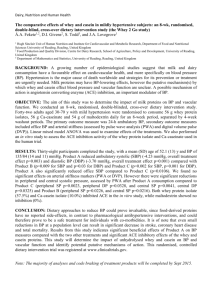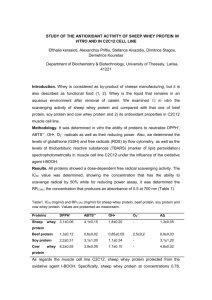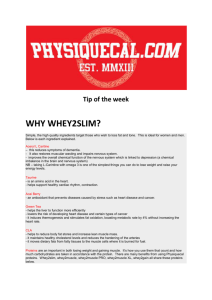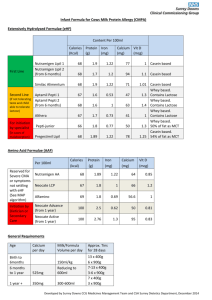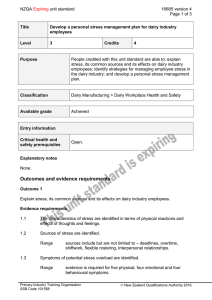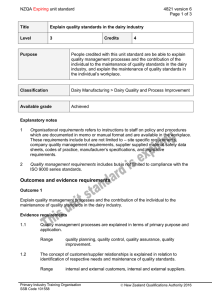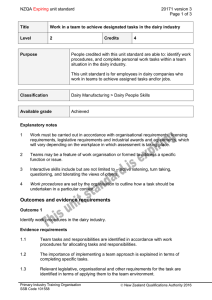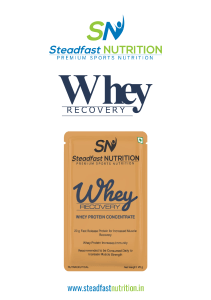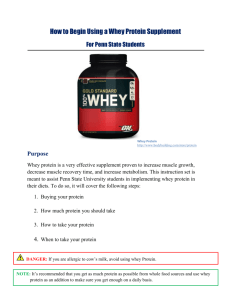NZQA unit standard 4834 version 6
advertisement
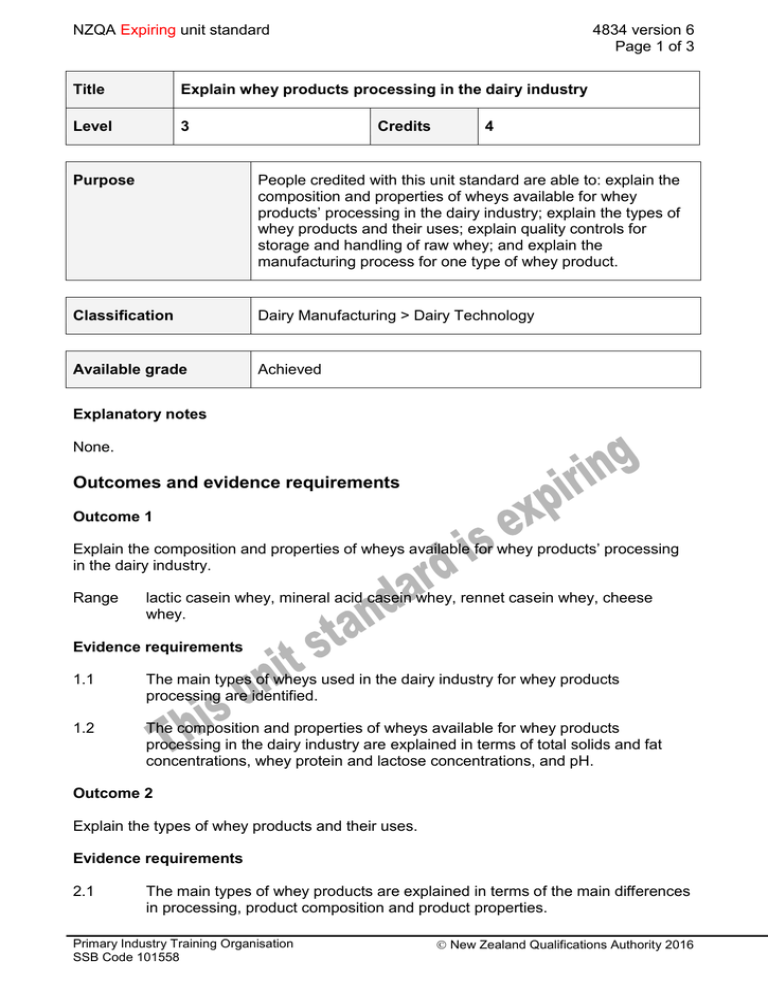
NZQA Expiring unit standard 4834 version 6 Page 1 of 3 Title Explain whey products processing in the dairy industry Level 3 Credits 4 Purpose People credited with this unit standard are able to: explain the composition and properties of wheys available for whey products’ processing in the dairy industry; explain the types of whey products and their uses; explain quality controls for storage and handling of raw whey; and explain the manufacturing process for one type of whey product. Classification Dairy Manufacturing > Dairy Technology Available grade Achieved Explanatory notes None. Outcomes and evidence requirements Outcome 1 Explain the composition and properties of wheys available for whey products’ processing in the dairy industry. Range lactic casein whey, mineral acid casein whey, rennet casein whey, cheese whey. Evidence requirements 1.1 The main types of wheys used in the dairy industry for whey products processing are identified. 1.2 The composition and properties of wheys available for whey products processing in the dairy industry are explained in terms of total solids and fat concentrations, whey protein and lactose concentrations, and pH. Outcome 2 Explain the types of whey products and their uses. Evidence requirements 2.1 The main types of whey products are explained in terms of the main differences in processing, product composition and product properties. Primary Industry Training Organisation SSB Code 101558 New Zealand Qualifications Authority 2016 NZQA Expiring unit standard Range 2.2 4834 version 6 Page 2 of 3 ethanol, whey protein concentrate, lactose, lactalbumin, demineralised whey powder. Types of whey products are explained in terms of common end use applications. Outcome 3 Explain quality controls for storage and handling of raw whey. Evidence requirements 3.1 Quality controls for storage and handling of raw whey are explained in terms of prevention of deterioration and enhancing final product quality. Range microbiological, temperature, composition, holding time. Outcome 4 Explain the manufacturing process for a whey product type. Evidence requirements 4.1 The main process steps of a whey product type are explained in terms of primary purpose(s) and key factors influencing product quality and yield. Range 4.2 clarification, reverse osmosis, ultrafiltration, precipitation, electrodialysis, ion exchange, crystallisation, evaporation, fermentation, distillation, drying. Raw materials and non-dairy ingredients used in the whey manufacturing process are identified and explained in terms of their main purposes and key factors influencing product quality. Replacement information This unit standard has been replaced by unit standard 28610 This unit standard is expiring. Assessment against the standard must take place by the last date for assessment set out below. Primary Industry Training Organisation SSB Code 101558 New Zealand Qualifications Authority 2016 NZQA Expiring unit standard 4834 version 6 Page 3 of 3 Status information and last date for assessment for superseded versions Process Version Date Last Date for Assessment Registration 1 22 June 1995 31 December 2017 Review 2 5 July 1999 31 December 2017 Review 3 26 August 2002 31 December 2017 Revision 4 13 June 2003 31 December 2017 Rollover 5 17 July 2009 31 December 2017 Review 6 18 June 2015 31 December 2017 Consent and Moderation Requirements (CMR) reference 0022 This CMR can be accessed at http://www.nzqa.govt.nz/framework/search/index.do. Please note Providers must be granted consent to assess against standards (accredited) by NZQA, before they can report credits from assessment against unit standards or deliver courses of study leading to that assessment. Industry Training Organisations must be granted consent to assess against standards by NZQA before they can register credits from assessment against unit standards. Providers and Industry Training Organisations, which have been granted consent and which are assessing against unit standards must engage with the moderation system that applies to those standards. Requirements for consent to assess and an outline of the moderation system that applies to this standard are outlined in the Consent and Moderation Requirements (CMR). The CMR also includes useful information about special requirements for organisations wishing to develop education and training programmes, such as minimum qualifications for tutors and assessors, and special resource requirements. Primary Industry Training Organisation SSB Code 101558 New Zealand Qualifications Authority 2016
